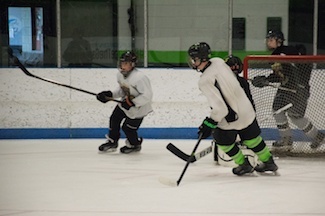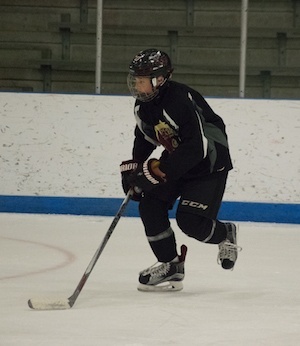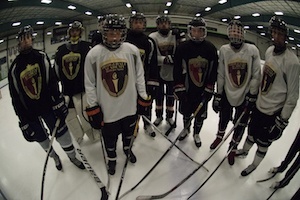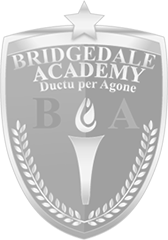Getting to the Next Level
by Mike McPartlin, Headmaster, Bridgedale Academy
What can a youth player do in the off-season to get to the next level?
Every year thousands of youth hockey players try out for their next season’s teams. Virtually all are trying to “get to the next level.”
In Illinois the next level might be AAA, or it might be their club’s Central States or Gold level teams. In some cases it might simply be making that first travel team.
But one thing is certain: All these players aspire to improve.
That’s what being competitive is all about.
And so all these young hockey players will “go for it” and work to improve, to be better tomorrow than they were yesterday.
Is training with an in-season team enough?
In a word - no. And so hockey parents must do whatever they can to support their child’s dreams and aspirations, especially when it comes to making that next-level hockey team.
Indeed, most parents will spend a significant amount of time, energy and money on supplemental hockey training for their child.
They'll do this because they understand that the relatively limited amount of in-season training most players receive at practices with their club teams is simply not enough.
At least it’s not enough if they expect him to fully realize his potential.
What can be done during the off-season?
During the “off-season” parents hoping to give their children that competitive advantage have a number of options. They may seek to enroll them in one or more of the following:
-
Spring Hockey;

-
Summer Camps and Clinics;
-
Private Lessons; and
-
One-off Tournament Teams.
What works and what doesn’t work?
But is all this supplemental hockey training really worth it? Are the various off-season activities worth the investment?
The answer of course is … maybe.
So let's take a quick look at each of these off-season options.
-
Spring Hockey
Spring hockey has its advocates and its detractors. It used to be that even the very best players chose not to participate in spring (or summer) hockey. Even Wayne Gretzky, the Great One, “hung up his skates” when the hockey season ended and participated in other sports.
There is no doubt that it can be extremely valuable for a youth hockey player to play other sports. Because as noted in a previous blog, the best athletes generally make the best hockey players.
But nowadays, it is basically “necessary” to participate in your targeted team's spring hockey program. And this is especially true for players trying out for AAA who have never played at the AAA level before.
On the positive side, there are a couple of significant benefits that can come from participating in AAA (or high-end AA) spring programs. For one, the overall level of play on the ice will generally be very high, because all or most of the players on the ice are very good youth hockey players.
The second benefit has to do with the caliber of the coaching. Because as a rule the AAA and high-end AA coaches will be very comfortable working with top players and therefore the quality of the training sessions will be consistently high.
-
Summer Camps and Clinics

Virtually all summer hockey camps and clinics have at least some value for most of the attendees. Some camps and clinics are of course better than others, most notably those (e.g. 200 x 85) where the coaching staff is strong and offers lots of feedback.
However, many week-long camps try to jam too much training into too short of a time frame. This has two downsides:
- fatigue often sets in and the quality of the reps suffers; and
- much like “cramming” for finals, much of what was taught is soon forgotten.
-
Private Lessons
With a quality instructor, private lessons can indeed be valuable. The one-on-one or small group setting allows the instructor to tailor the training to meet the players’ specific needs.
Two potential downsides are:
- the expense; and
- keeping the player’s intensity and commitment level up during the training, as it can be counterproductive if the player would have preferred to be elsewhere, e.g. if it was the parent and not the player who insisted on the lessons.
-
Tournament Teams

Off-season tournament teams can definitely be fun, but they can of course also be expensive. Yet at the same time they also have the potential to be fantastic learning experiences.
The potential upsides are:
- usually the teams participating in the tournaments are made up of all “top” players, and so the level of competition is high;
- players have the opportunity to make new friends and also to develop their team-building and leadership skills, i.e. because the group must “become a team” in a very short time-frame.
Conclusion
The most important thing about ANY off-season youth hockey developmental program is that it should be challenging for the young player. Most parents understand this and will therefore look to put their child in an environment that will “bring out the best” in him.
As long as the program does that, there will be value for the young player.
But there is a bottom line reality that underscores all of this, and it is encapsulated in one simple sentence:
Hockey Demands Commitment.
For more on the type of commitment I'm talking about, check out my blog on "Mindset and Youth Hockey Development."
Full disclosure:
Over the years I coached many spring hockey teams, including with the Chicago Mission during its first twelve years of existence. For probably twenty years I also ran off-season developmental hockey camps and clinics, and gave my share of private lessons. And I have coached dozens of tournament teams, primarily with the Bauer Selects, including many tournament trips to Europe and Canada.
To learn more about Bridgedale, please click the button below to schedule a time to chat with Bridgedale's Headmaster.
You might also enjoy reading another of our blog posts at: "Top 7 Reasons for a Sports Academy Like Bridgedale Academy"
Bridgedale Academy is an all-boys school for athletes, a prep school for serious youth hockey players. We will offer grades 5 through 8 in the 2018-19 school year. In addition to our winning combination of sports and academics, we focus on leadership training. We use a classical academic curriculum and our graduates go on to attend some of the most prestigious high schools in the midwest, including Lake Forest Academy, Culver Military Academy, Shattuck St. Mary’s, Northwood School, Benet Academy, Fenwick Prep, St. Ignatius Prep, Latin School and Providence Catholic. We pride ourselves on being the top youth hockey prep school in the nation. Eleven (11) of our former or current students have already received their NCAA Division 1 college hockey commitments. Three (3) of our former students competed for USA Hockey’s National Team Development Program and will begin their college playing careers in 2018-19, two at Notre Dame and one at Michigan.




